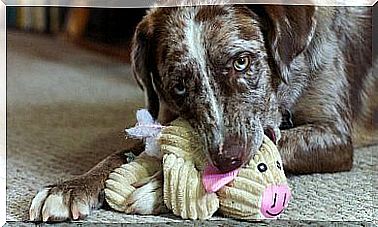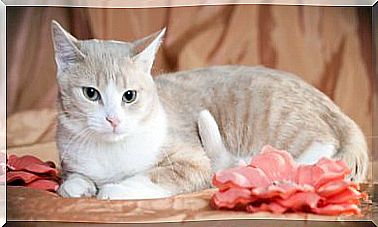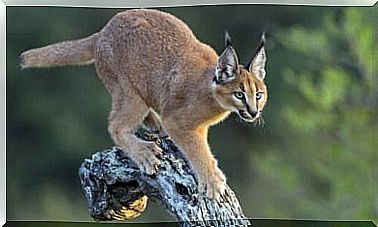What Are Viviparous Animals?

The form of reproduction by which the young are carried in the mother’s womb, and then fed by her, is defined as viviparity. Humans are viviparous animals, like virtually all mammals, but so are a handful of amphibians and reptiles that share this condition. Learn more about them below.
Characteristics of viviparous animals
The main characteristic of viviparous animals is that the embryo develops in the mother’s womb and that they reproduce sexually: the female receives the sperm from the male and, upon uniting with the ovum, the development of the fetus begins.
The young develop within a placenta, from which they receive the nutrients and oxygen necessary to grow; there they stay alive until the moment of birth.
The only exception to this are marsupials, which grow in a kind of “sac” located in the female’s belly, in which they can remain for several weeks after they are born.
The gestation period depends on the species and also on the size of the animal; One aspect that differentiates viviparous animals from each other is the number of offspring they can have per litter or pregnancy. The rabbit is one of the most fertile, while the human being is among the least, since in practically all pregnancies the woman gives birth to a single baby.
Examples of viviparous animals
The vast majority of mammals are viviparous, with the exception of the platypus and the echidna, as they lay eggs (they are oviparous). Some species, whose reproduction occurs through a female fertilized by a male and the offspring develops in the mother’s womb, are:
1. Giraffe
Males mate with females in the fertile stage and in a polygamous manner during the mating season. Gestation lasts between 400 and 460 days, and after that time the mother gives birth standing up to a calf: the calf emerges headlong and falls to the ground, cutting the umbilical cord. After being washed, he stands up and takes the first steps, to then spend a month “glued” to her while he feeds her milk.
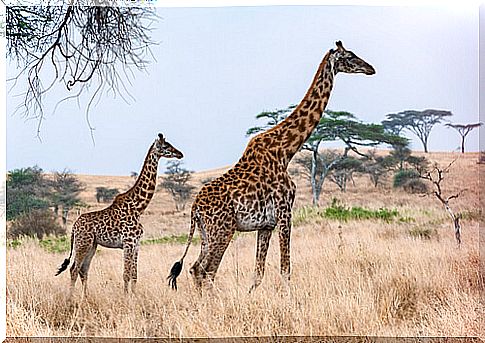
2. Elephant
Mating can occur at any time of the year: when the female is ready to mate she makes sounds to attract the males, who fight each other to see who is best suited for reproduction.
The elephant is the mammal with the longest gestation (22 months), although it only has one calf at a time. This is breastfed for up to five years and can eat solids from six months.
3. Rabbit
As for the rabbit, the females can reproduce after three months of life. Successive deliveries are frequent, since they are fertile all year round.
Gestation lasts 32 days and each litter can contain between 4 and 12 young, which are born blind and without hair. The mother visits them every day in the cave established as a home to feed them with her milk.
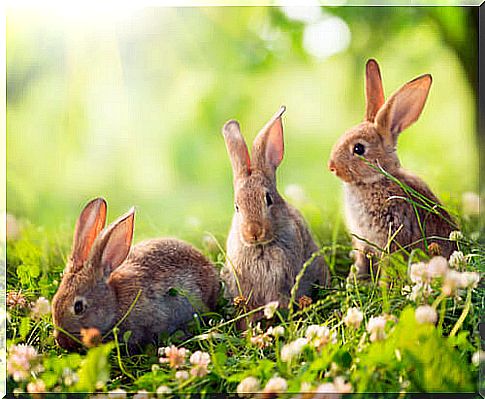
4. Bat
They lead a “licentious” life – in human terms – because they can copulate with several close companions : some males even have harems of females. They reproduce before the hibernation stage in temperate zones or at any time of the year in tropical areas.
Regarding the gestation period, this can vary between 40 days and 10 months depending on the weather. Generally, it should be noted that they usually give birth to one young per litter.
5. Panda Bear
Although bear species have similar characteristics in terms of reproduction, some have different habits, such as the panda. The time to breed is spring, the gestation period lasts five months and they can have one or two young per litter, which are blind and weigh 140 grams. The mother breastfeeds them up to 14 times a day and they live with her for up to two years.
6. Dolphin
The last of the viviparous animals on this list performs a brief, face-to-face sexual act to reproduce. The gestation period of dolphins ranges from 11 to 17 months depending on the species and they always have one calf at a time. The baby feeds on breast milk for the first months of life.


